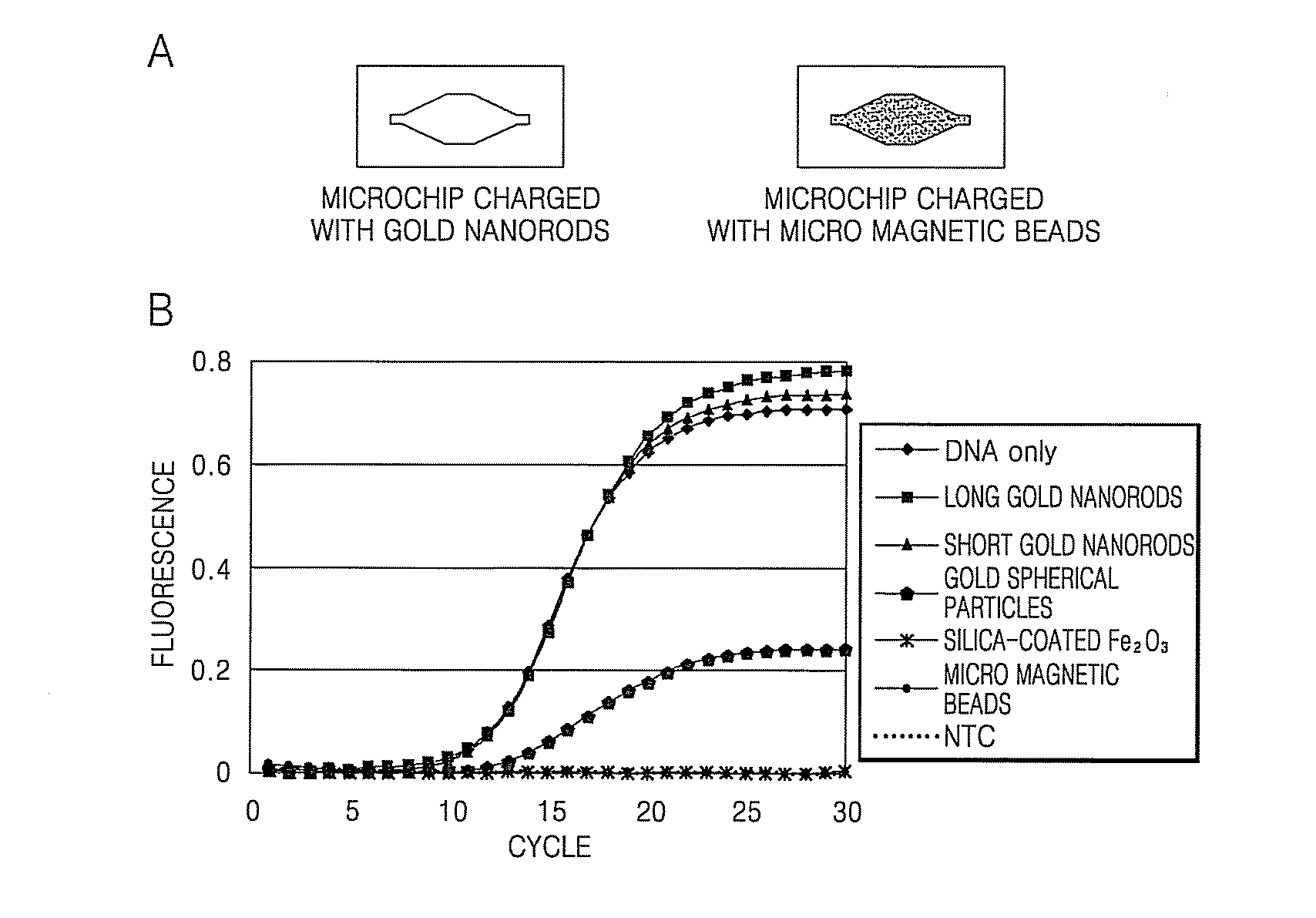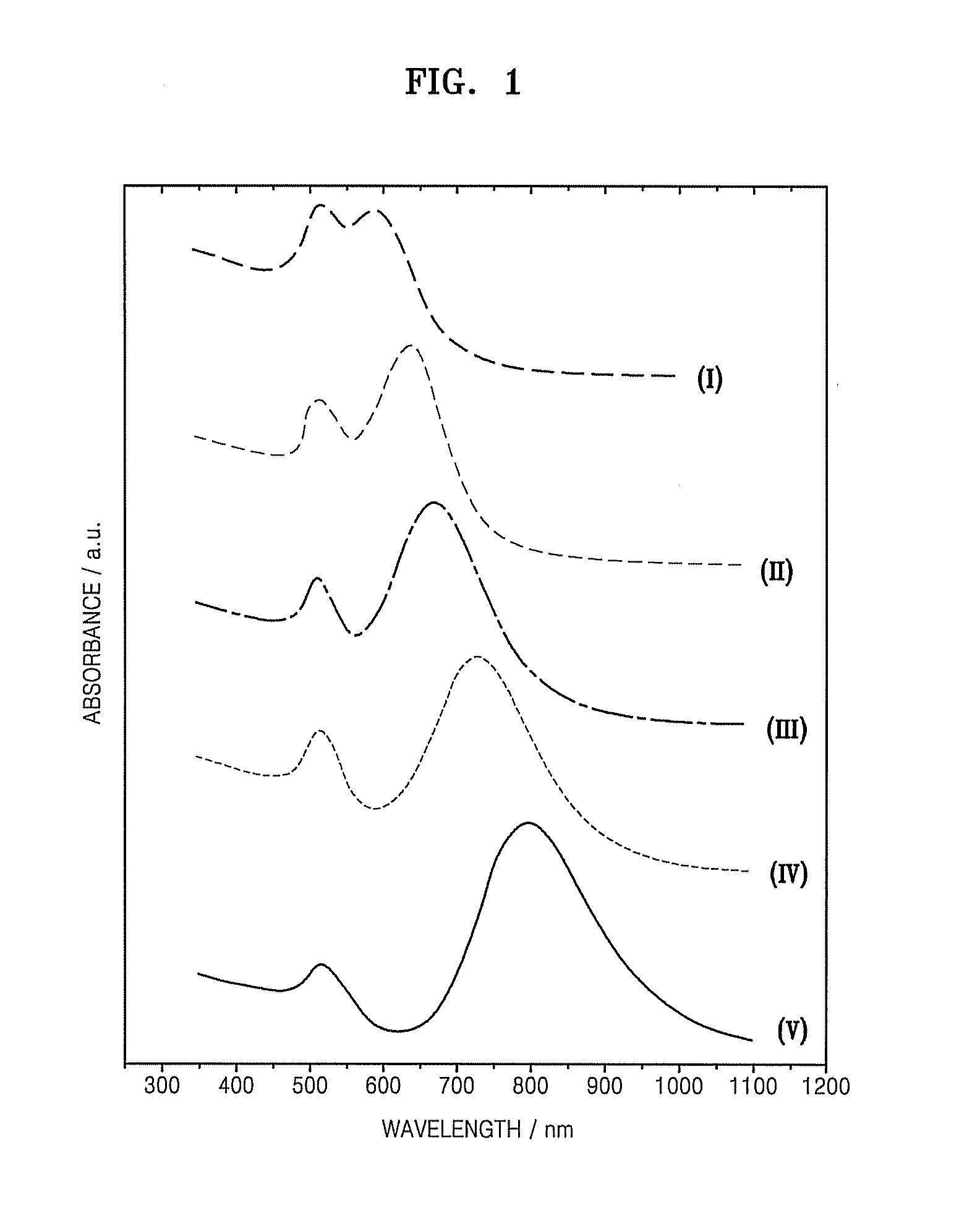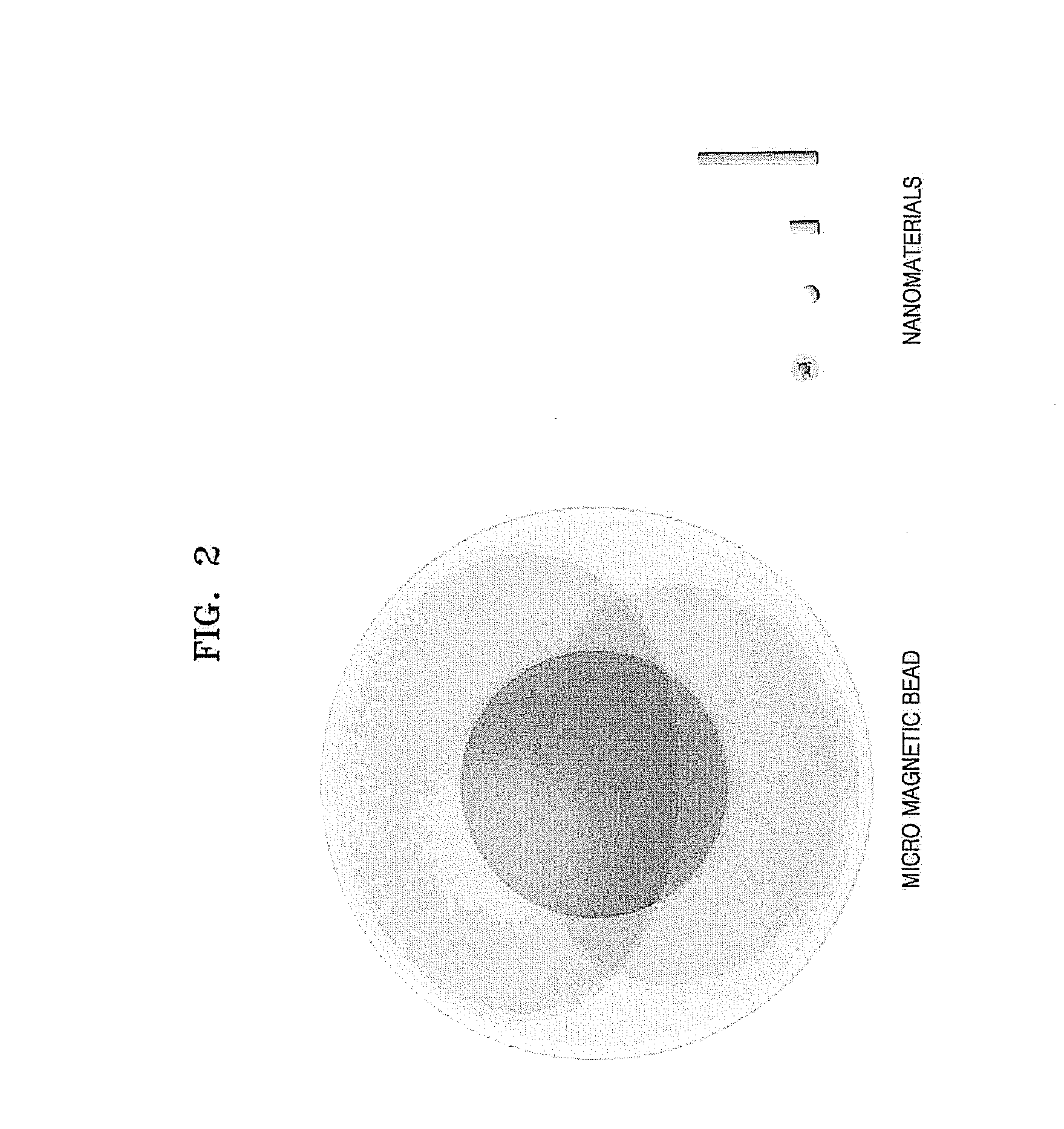Method and apparatus for disrupting cells and amplifying nucleic acids using gold nanorods
a technology of nucleic acids and gold nanorods, which is applied in the field of methods and apparatuses for disrupting cells and amplifying nucleic acids using gold nanorods, can solve the problems of additional costs, loss of cell function, and ineffective transfer of laser energy to cells
- Summary
- Abstract
- Description
- Claims
- Application Information
AI Technical Summary
Benefits of technology
Problems solved by technology
Method used
Image
Examples
example 1
Preparation of Gold Nanorods (1)
[0046]In an Erlenmeyer flask, 20 milliliters (mL) of an aqueous solution containing 2.5×10−4 M HAuCl4 and 2.5×10−4 M trisodium citrate was prepared. Then, 0.6 mL of a 0.1 M cold NaBH4 solution was added at one time. The color of the solution changed to pink as soon as the NaBH4 solution was added, which indicates the formation of particles. This solution was used as a seed particle solution within 2-5 hours after preparation.
[0047]In a clear test tube, 10 mL of a growth solution containing 2.5×10−4 M HAuCl4 and 0.1 M cetyltrimethylammonium bromide (CTAB) was mixed with 0.05 mL of a 0.1 M ascorbic acid solution. Then, 0.025 ml of the seed particle solution prepared above was added to the growth solution without stirring or shaking. The seeded growth solution was left undisturbed for about 40 minutes to obtain gold nanorods. FIG. 4 is a transmission electron microscopic (TEM) image of the resulting gold nanorods. The gold nanorods had a diameter of abou...
example 2
Preparation of Gold Nanorods (2)
[0048]Long gold nanorods were prepared in the same manner as in Example 1, except that the concentration of CTAB in the growth solution was 5 mM and the growth time was 2 hours. FIG. 5 is a TEM image of the resulting gold nanorods, including a scale bar of length 100 nm for reference. The gold nanorods had a diameter of about 15.4 nm, a length of about 254±43 nm, and a diameter to length ratio of about 1:13.7 to about 1:19.3.
example 3
Measurement of the Absorbance of the Gold Nanorods
[0049]The absorbance of the gold nanorods prepared in Examples 1 and 2 was measured using a laser in a wavelength range of about 300 to about 1400 nm and the results were compared to the results obtained with other nanomaterials. For the measurement, a 1 mg / mL rod solution was added to a 1 cm3 quartz cell, which was then placed in an ultraviolet-visible (UV-Vis) spectrometer. The results are illustrated in FIG. 6. Referring to FIG. 6, the gold nanorods prepared in Example 1, with a diameter to length ratio of about 1:3, demonstrate a high level of absorbance in the wavelength range of about 750 to about 910 nm. In contrast, the gold nanorods prepared in Example 2, with a diameter to length ratio of about 1:13.7 to about 1:19.3, demonstrated a high level of absorbance at a wavelength of about 910 nm or more. Both the short and the long gold nanorods had a higher absorbance at a wavelength of about 808 nm than the other nanomaterials. ...
PUM
| Property | Measurement | Unit |
|---|---|---|
| length | aaaaa | aaaaa |
| power | aaaaa | aaaaa |
| wavelength | aaaaa | aaaaa |
Abstract
Description
Claims
Application Information
 Login to View More
Login to View More - R&D
- Intellectual Property
- Life Sciences
- Materials
- Tech Scout
- Unparalleled Data Quality
- Higher Quality Content
- 60% Fewer Hallucinations
Browse by: Latest US Patents, China's latest patents, Technical Efficacy Thesaurus, Application Domain, Technology Topic, Popular Technical Reports.
© 2025 PatSnap. All rights reserved.Legal|Privacy policy|Modern Slavery Act Transparency Statement|Sitemap|About US| Contact US: help@patsnap.com



